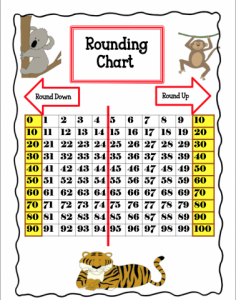*Dear Division 4 Families,
I have been made aware of a technical issue where the links to the assignments are not going through and a page that says Error 404 comes up. I have tried re-uploading the documents, but it hasn’t fixed the issue. I have contacted the school district tech support and while I wait for a response to see how to fix this, I will send today’s documents to parent emails.
I apologize for any inconvenience!
Ms. Chin
*If you don’t have a printer, feel free to pick some questions to practice on a blank sheet of paper.
Grade 1’s: Practice with Using a Number Line for Addition/Subtraction
Remember: When you add on a number line, you start with the biggest number in the equation. Find that number on a number line. Then look at the second number in the equation; that tells us how many “jumps” to do on the number line. The number you land on is your answer!
Example: 5+3

Worksheets:
Addition on a Number Line
*There are quite a few questions, please don’t feel that it must be completed all in one sitting or in one day. Feel free to space it out and break it up into chunks that work for you.
Grade 2’s: Rounding to Nearest 10 and 100
We have already practiced rounding numbers to the nearest 10. For example, if I have the number 18, the nearest numbers that are a multiple of 10 are 10 and 20. On a number line 18 is closer to 20 so I would round up to 20. If you’re rounding to the nearest 10, look at the number in the ones column. For the number 18, the number in the ones column is 8. If the number is 5 or bigger you round up, if the number is less than 5, you round down. Remember that 5 is the middle point! 0-4 stay on the floor (round down), 5-9 climb the vine (round up)!
10, 11, 12, 13, 14, 15, 16, 17, 18, 19, 20
Now when you round to the nearest 100, it’s the same thing. If I have the number 380, I look at the nearest numbers that are a multiple of 100, which would be 200 and 400. On a number line, or in my head, I can tell that 380 is closer to 400 and so I would round up. You can do the same thing that we did when we rounded to the nearest 10. When we are rounding to the nearest hundred, look at the number next to it which is in the tens column. For 380, there is an 8 in the tens column. Then I have to think whether 8 is bigger or smaller than 5. 8 is bigger than 5, so I would round up.
Another example, is the number 123. If I round to the nearest 10, I think about the numbers 123 would be between in terms of the numbers in the tens column (the numbers would be 120 and 130). I look at the number next to the tens column, which is the last number (3-which is in the ones column). Is 3 bigger or smaller than 5? It’s smaller, so I would round down. 123 rounded to the nearest 10 would be 120. If I was asked to round to the nearest 100, I have to think of the numbers the 123 would be between in terms of multiples of 100 (the numbers would be 100 and 200. I would look at the number in the tens column (the middle number-which is a 2). 2 is smaller than 5 so I would round down again. 123 rounded to the nearest 100 is 100.
Here is a video to a song that may help with remembering the concepts: Rounding Numbers Nearest 10 and 100 Rap
Here is a rounding chart that you may want to use to help you (I couldn’t make the image bigger, so I also attached it in the PDF form as well):

Rounding Chart
Worksheet: Rounding to Nearest 10 and 100 Doc 3


